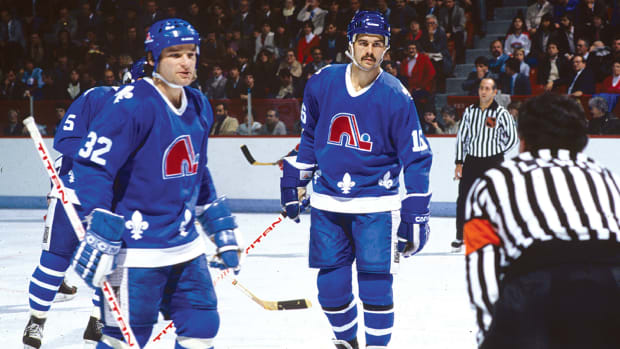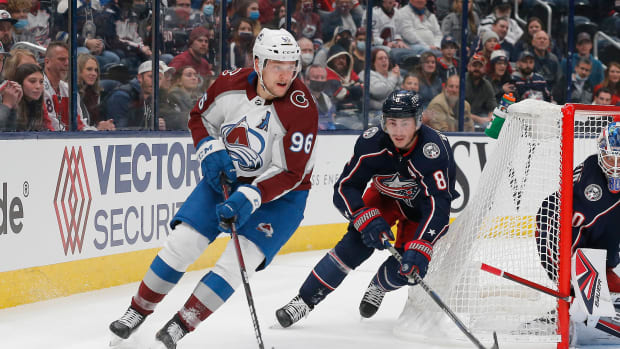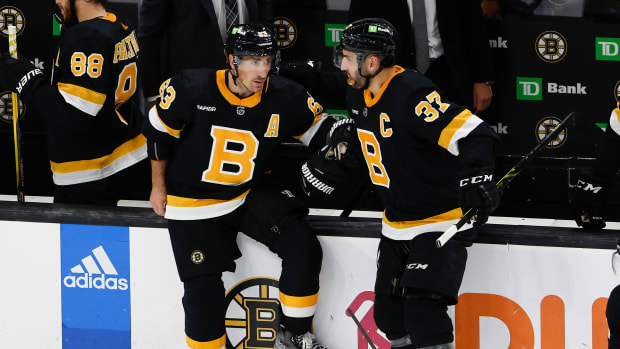A new report from Sportico ranking the valuations of every NHL team made one thing perfectly clear: it’s never been a better time to be an NHL team owner. Franchise values surged so that the average franchise is reportedly up nine percent and pegged at a combined total of $32.4 billion. That’s not chump change. That’s a success. NHL commissioner Gary Bettman has done very well for the owners who employ him.
Indeed, if we take a closer look at the financial mechanisms in place for the NHL, we see why Bettman and team owners so willingly agreed to an extension of the collective bargaining agreement in 2020. Owners are making money hand over fist, while players’ salaries have, in some regards, flatlined. As owners have watched team values soar, many players’ paydays have hit a ceiling. Bettman’s hard salary cap has worked as intended, and players’ leverage has disappeared prior to, and under the reign of NHL Players’ Association boss Don Fehr. There are a few options the players have to try and regain some leverage, and the one that does exist is not a half-measure. We’ll get into that in a handful of paragraphs from now. But let’s get back to Sportico’s appraisal of NHL teams.
The Toronto Maple Leafs are ranked first overall in terms of value, at approximately $2.12 billion, while the Arizona Coyotes slot in last at $465 million. We know what you’re thinking – the Coyotes? A team that hasn’t won zilch? A team that infamously had a public spat with its business partners because they weren’t paid on time? That team is worth nearly half a billion? Then you look and see the Coyotes are valued at a lower price than what Seattle’s ownership paid for an expansion team in 2018, and it makes more sense. Regardless, it must be real nice to be in that little owners club.
We’re going to get another lesson in NHL franchise values when the Ottawa Senators find a taker to buy the organization from the family of late owner Eugene Melnyk. Sportico and the Ottawa Sun’s Bruce Garrioch reported Melnyk’s daughters, Olivia and Anna, have apparently retained the services of a bank in order to look into the sale of the NHL team and its Kanata, Ont., arena. The Senators are another team that has struggled on the ice and at the gate – they’re near the bottom of the NHL’s attendance rankings, yet Sportico’s valuation of the franchise is a very healthy $677 million. In 2003, Melnyk bought the franchise for $92 million. Please, tell us again how poor you are, NHL owners. Tell us why advertisements on jerseys are necessary to your survival.
That said, there is not a similarly-huge windfall for the players – you know, the group the NHL claims they’re 50/50 partners with. Yes, the average player’s salary is up to $3.196-million – approximately what Steve Yzerman made as the NHL’s second-highest-paid player in 1993-94. Mario Lemieux set a new salary peak by leading the league in
paydays in 1996-97 at a salary of $11.35 million; this season, only six NHLers will earn $11 million or more, and only four will make $11 million or more this year.
And, compared to other athletes in other sports leagues, the very upper end of the talent spectrum is not compensated nearly as well as players in the NBA, MLB, the NFL and elite-level soccer. Top players in those leagues earn at or near the $75 million level per year. NBA icon LeBron James was paid $41.2 million last season. The NBA’s top-paying player this season – Golden State superstar Stephen Curry – earns $48 million. What are the NHL’s top players lacking that keeps them at about one-quarter financially of their NBA equivalents?
The answer is: the NHL’s union has been unable to generate the leverage needed to make significant gains for players in the CBA. And, given that there’s no push within the union to make waves in negotiations, the NHLPA membership is left with one option: as former NHLPA consultant Richard Rodier has consistently argued, the players could register their discontent with their salaries by voting to decertify the union. Doing so could nullify the CBA, and make each player an unrestricted free agent. They could be able to sign for whatever amount, and term length, they can get. There would be no cap. True capitalism would take over. And player salaries would skyrocket.
This is a nightmare scenario for Bettman and the owners, but franchise values would not plummet. They certainly haven’t in MLB, which has no cap, or in the NBA or NFL, both of which do have caps, but not as stringent as that of the NHL. All three of those leagues make more money, too. Something to consider next time you want to pretend this is a true 50/50 partnership in hockey’s top league.
Again, credit Bettman for doing his job – making as much money as humanly possible for owners. Clearly, if that means removing the aura of the NHL’s advertiser-free jerseys, he and the owners are willing to do that. Nothing is sacred. And the richest people in hockey are only getting richer.



